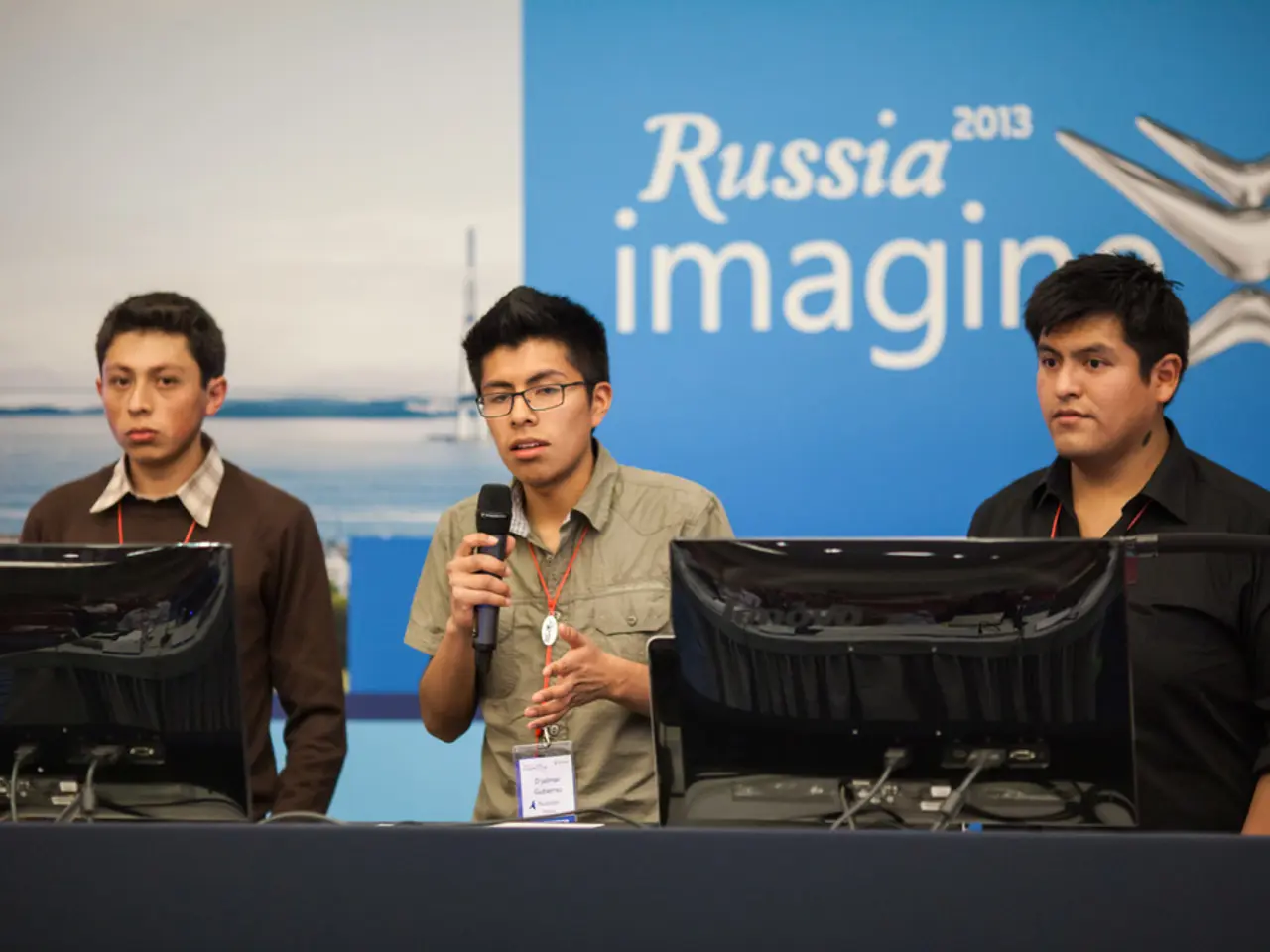Interstellar Rarity Passing Through Solar System: Initial Sightings by Innovative Telescope
The Vera C. Rubin Observatory, a state-of-the-art telescope overseen by the National Science Foundation (NSF) and the Department of Energy (DOE), made an unexpected discovery on June 21, 2025. During its regular sky surveys, the observatory captured images of a mysterious object that would later be identified as comet 3I/ATLAS [2][4].
This celestial visitor, the third interstellar object to be discovered, was first officially identified and confirmed on July 1, 2025 [1][2][3]. The Rubin Observatory's observations continued through July 7, 2025, during which cometary activity was detected and high-precision astrometric and photometric measurements were made [2].
The comet, with a cloud of gas and dust surrounding its icy nucleus, was also observed by the Gemini North telescope on Maunakea, Hawaii, and the Deep Random Survey remote telescope in Rio Hurtado, Chile [1].
A recent study found that 3I/ATLAS has a hyperbolic velocity of about 37 miles per second (60 kilometers per second), making it not only older, but also faster than the two previously discovered interstellar objects, 'Oumuamua and Comet 2I/Borisov [5].
The Rubin Observatory's first public images were unveiled on June 23, capturing millions of galaxies and stars in the Milky Way over a period of 10 hours [3]. The observatory's first images of 3I/ATLAS, captured serendipitously during the science validation phase, are the earliest images captured of the comet by a high-precision telescope [4].
As 3I/ATLAS approaches perihelion, its closest approach to the Sun, on October 30, 2025, it will unfortunately be lost from sight by the Rubin Observatory on August 22 [1]. However, the astronomers behind the study will continue to monitor the interstellar visitor in Rubin's images until then.
The new paper, which includes 49 images in total, with 19 of them captured during intentional operations confirming 3I/ATLAS behaves like a comet, is a testament to the Rubin Observatory's capabilities. Boasting the largest digital camera ever built for astronomy, the Rubin Observatory continues to push the boundaries of our understanding of the universe.
| Event | Date | Details | |----------------------------------|---------------------|-----------------------------------------------------| | Earliest Rubin Observatory images | June 21, 2025 | Comet imaged serendipitously during science validation phase, before official discovery[2][4] | | Official discovery date | July 1, 2025 | Comet 3I/ATLAS first identified and confirmed[1][2][3] | | Rubin Observatory observations end | July 7, 2025 | Latest reported detections in initial study[2] | | Perihelion (closest approach to Sun) | October 30, 2025 | Not observed by Rubin in initial commissioning phase, but comet brightens toward this date[1][3] |
- The Rubin Observatory, a telescope that utilizes advanced technology, made a groundbreaking discovery on June 21, 2025, capturing images of an unexpected interstellar comet, later named 3I/ATLAS.
- This comet, having a cloud of gas and dust surrounding its icy nucleus, was also observed by other technological instruments, such as the Gemini North telescope and the Deep Random Survey remote telescope.
- The future of scientific exploration was underscored with the study of 3I/ATLAS, which showed it to be older and faster than the previously discovered interstellar objects, emphasizing the importance of environmental-science and space-and-astronomy research.
- The Rubin Observatory, boasting the largest digital camera ever built for astronomy, has demonstrated its capabilities in pushing the boundaries of our understanding of the universe through this and other remarkable discoveries.




